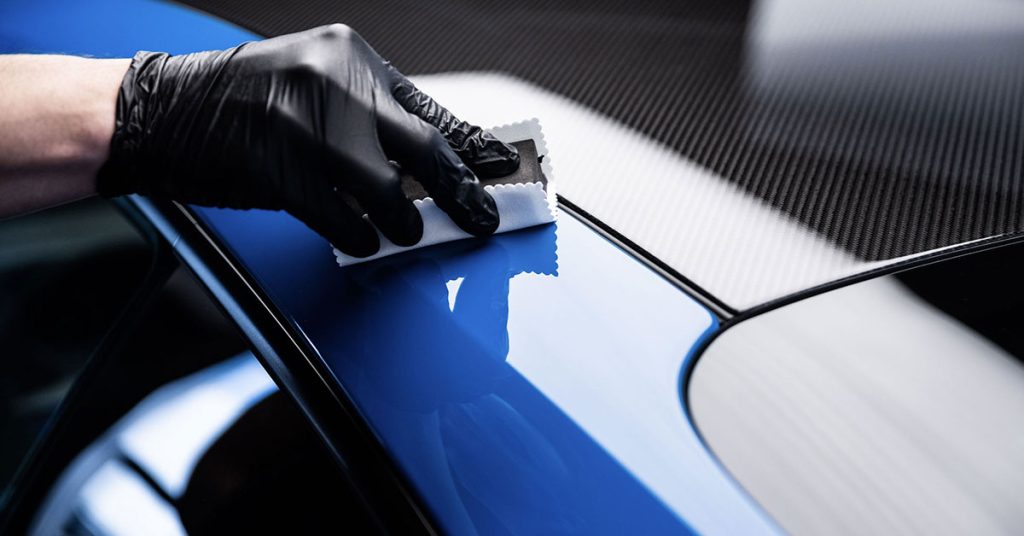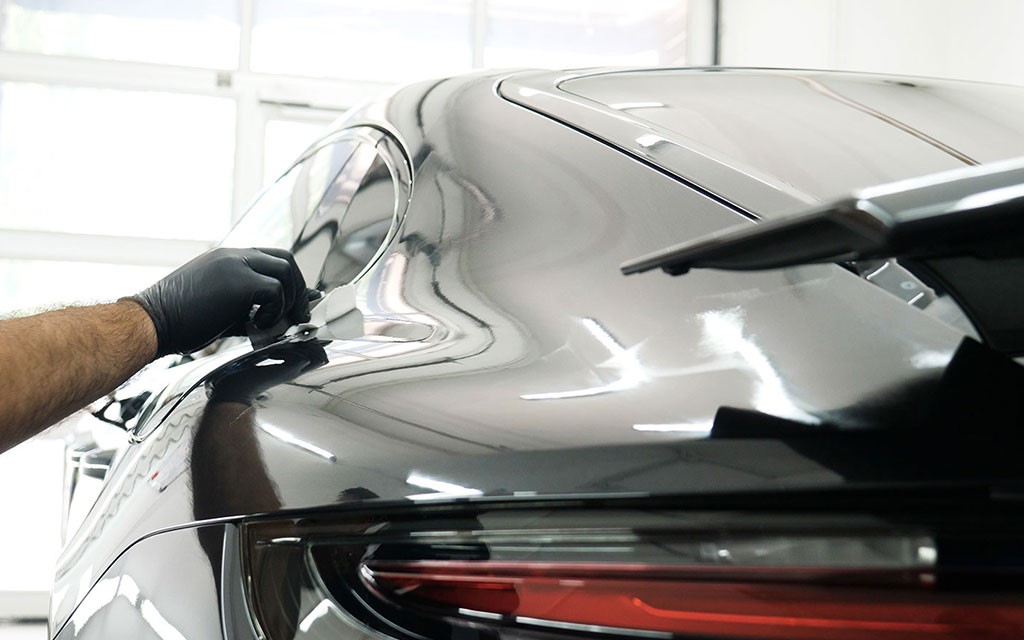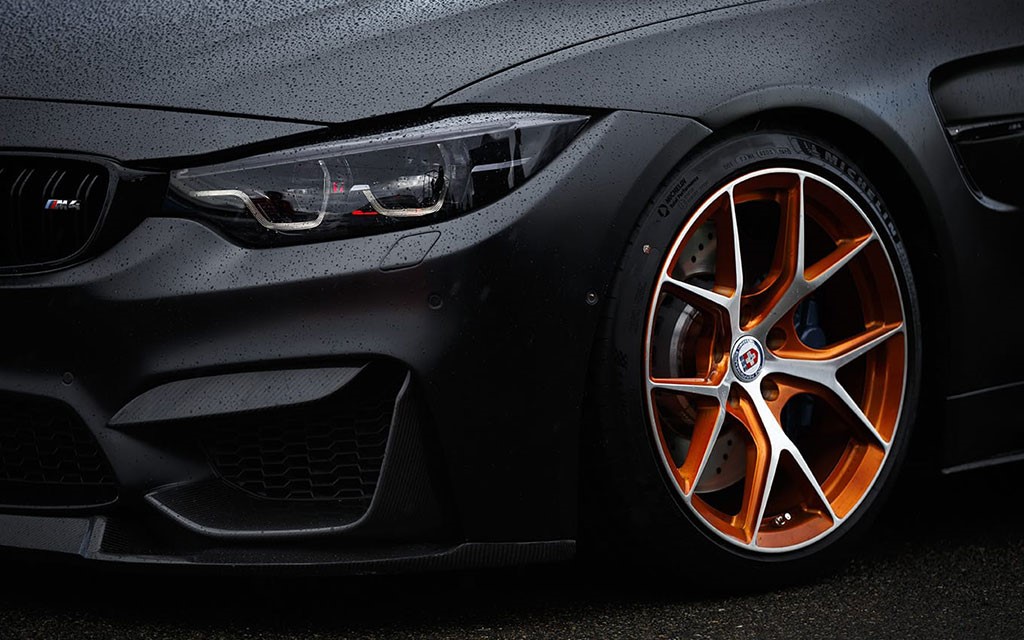Have you ever found yourself admiring the glossy, showroom-like finish on a well-maintained vehicle and wondered how it maintains such pristine condition? Ceramic coating has emerged as a popular solution among car enthusiasts who are passionate about preserving their vehicle’s paint and protecting their investment for years to come. This water-repellent coating offers exceptional protection against dirt and grime, making it increasingly popular for those wanting to keep their car looking pristine. As more drivers consider this advanced paint protection option, the question inevitably arises—is ceramic coating worth it?
In this guide, we’ll explore the technology behind ceramic coating, examining both its considerable advantages and potential drawbacks to help you make an informed decision.
Key Takeaways
- Ceramic coating provides superior paint protection against environmental contaminants and UV rays, significantly extending your vehicle’s exterior finish life.
- The application creates a remarkable enhancement to your vehicle’s aesthetic appeal, delivering a deep, mirror-like shine that conventional waxes simply cannot match.
- While the initial investment may seem substantial compared to traditional protection methods, many vehicle owners find the long-term value justifies the upfront expense.
- For optimal results that maximize your investment, professional application is strongly recommended over DIY attempts.
- Despite its durability, ceramic coating is not a permanent solution—it will eventually require reapplication, though much less frequently than conventional waxes.
Table of Contents
Understanding Ceramic Coating: Basics and Function
Ceramic coating is a liquid polymer solution that chemically bonds with your vehicle’s factory paint, creating a permanent or semi-permanent layer of protection that doesn’t wash away or break down over time like traditional wax or sealant. This sophisticated nano coating contains silicon dioxide (SiO2), which forms the foundation of its extraordinary protective properties. When the coating is applied professionally, it transforms from a liquid state into an incredibly hard, transparent ceramic layer that becomes essentially integrated with your car’s paint surface.
The science behind ceramic coating involves a fascinating chemical bonding process that creates an extraordinarily resilient protective barrier. When applied to your vehicle’s surface, the liquid polymer fills microscopic pores in the paint, creating an exceptionally smooth surface. The hydrophobic properties of ceramic coating create a water-repelling effect through chemical reactions with the factory paint. After coating application, the surface actively repels contaminants rather than allowing them to bond.
A professionally-applied ceramic coating offers several distinctive characteristics that set it apart from conventional protection methods. The standout features of ceramic coating include its exceptional hydrophobic qualities that create a surface where water forms tight beads that simply roll off, carrying dirt and grime away rather than allowing them to settle and potentially damage the paint. This helps protect your car’s paint from environmental damage and makes maintaining a ceramic-coated car significantly easier.
Pros of Ceramic Coating
Protection from Environmental Factors
One of the most compelling benefits of ceramic coating is its extraordinary ability to shield your vehicle from a wide array of environmental hazards that constantly threaten your paint’s integrity. The robust protective barrier effectively guards against harmful UV rays that would otherwise cause oxidation and fading, particularly in regions with intense sunlight exposure. Unlike traditional wax products, ceramic coating helps prevent damage before it occurs, which is why many car owners view it as essential protection.
The coating provides formidable resistance against acidic contaminants, including bird droppings, tree sap, and industrial fallout, which can quickly etch into unprotected paint surfaces and cause permanent damage. Road salt, particularly damaging in winter months, has significantly reduced impact on ceramic-coated vehicles, helping to prevent corrosion and premature aging of the paint surface.
Enhanced Aesthetic Appeal
Beyond its protective qualities, ceramic coating delivers an unmatched visual transformation that traditional waxes simply cannot achieve. The coating creates an exceptionally deep, glass-like shine that enhances your vehicle’s factory paint by adding remarkable clarity, depth, and reflectivity. Colors appear more saturated and vibrant, with darker colors developing an almost liquid-like appearance that turns heads wherever you drive.
Long-Lasting Durability
Unlike traditional waxes that might last weeks or perhaps a couple of months at best, properly applied ceramic coatings offer exceptional longevity that translates to tremendous value over time. Depending on the specific product quality and maintenance routine, these advanced coatings can protect your vehicle for anywhere from 3 to 7 years before requiring reapplication. This remarkable durability means that while the initial investment might seem substantial, when amortized over the coating’s lifespan, the annual cost of protection becomes quite reasonable.
Easy Maintenance and Cleaning
Perhaps one of the most appreciated day-to-day benefits is how dramatically ceramic coating simplifies car care. The hydrophobic properties of ceramic create a surface so slick that water, dirt and grime have tremendous difficulty adhering to it, instead beading up and rolling off with minimal effort. After a car wash, ceramic-coated vehicles dry more quickly and maintain their clean appearance longer, saving you both time and money in the long run.
Many ceramic-coated vehicle owners report that a simple rinse with a pressure washer removes most surface dirt, eliminating the need for frequent contact washing that risks introducing swirl marks. This reduced maintenance burden is particularly valuable for busy professionals and those living in areas with frequent pollen, dust, or road grime.
Benefit | Description | Impact |
Protection from Environmental Factors | Shields against UV rays, acidic contaminants, and pollutants | Significantly reduces paint oxidation and fading |
Enhanced Aesthetic Appeal | Delivers a deep, glass-like finish with superior reflectivity | Dramatically improves vehicle appearance |
Long-Lasting Durability | Provides protection for 3-7 years depending on product quality | Offers excellent long-term value |
Easy Maintenance and Cleaning | Creates a hydrophobic surface that repels contaminants | Reduces washing frequency and effort |
Cons of Ceramic Coating
High Initial Cost
The considerable upfront investment required for quality ceramic coating represents a significant consideration for many vehicle owners contemplating this protection option. The cost of ceramic coating services varies widely, with professional ceramic coating application packages typically ranging from $500 to $2,000 or more. This initial cost depends on the specific coating product brand, vehicle size, paint correction requirements, and geographic location. For those unfamiliar with what is paint correction, it’s a meticulous polishing process that removes swirl marks, scratches, and oxidation to ensure a flawless surface for coating adhesion.Many wonder whether ceramic coating is worth the cost given this substantial investment.
Need for Professional Application
Achieving optimal results with ceramic coating typically requires professional application by experienced technicians with specialized equipment and controlled environments, which contributes significantly to the overall cost and complexity. Before applying the ceramic coating, professionals often perform thorough paint correction to ensure the surface is perfectly clean and free of imperfections. This preparation is crucial because once the coating forms and bonds, any underlying imperfections will be sealed in.
While DIY ceramic coating kits have become increasingly available at lower price points, they generally offer reduced durability and performance compared to professional-grade products. When applying a ceramic coating yourself, application mistakes can be difficult or impossible to correct without professional intervention.
Not a Permanent Solution
Despite their exceptional durability, it’s important to understand that ceramic coatings are not truly permanent solutions that last for the entire life of your vehicle. One downside to ceramic coating is that even the highest quality professional coatings eventually degrade due to environmental exposure, washing techniques, and normal wear and tear. There are several misconceptions about ceramic coating, with the most common being that it never requires maintenance or that it completely prevents scratches – neither of which is entirely accurate.
Is Ceramic Coating Worth It? Evaluating the Investment
Cost Comparison with Traditional Waxing
To determine whether ceramic coating is worth it financially, it’s helpful to compare its costs with more traditional protection methods like regular wax or sealant applications over an extended period. While the initial investment in ceramic coating might seem substantial, the long-term math often tells a different story. Traditional carnauba wax typically costs between $20-$50 per application when done professionally, but requires frequent reapplication every 2-3 months to maintain effective protection. Over a five-year period, this translates to approximately 20 applications, potentially costing $400-$1,000 in professional detailing services—approaching or even exceeding the one-time ceramic coating investment.
Type | Initial Cost ($) | Frequency of Application | Total 5-Year Cost ($) |
Traditional Waxing | 20-50 per application | Every 2-3 months | 400-1,000+ |
Ceramic Coating | 500-2,000 | Once per 3-7 years | 500-2,000 |
Long-Term Value and Protection
Beyond pure cost considerations, evaluating whether ceramic coating is worth it requires understanding the comprehensive protection value it delivers throughout its lifespan. Ceramic coating offers constant protection against UV rays damage, which is the primary cause of clear coat failure and paint oxidation over time. For proper maintenance, professionals recommend you use a pH-neutral car shampoo when washing to avoid degrading the coating prematurely – a small adjustment that helps ensure the coating is worth the investment.
Buyer Considerations for Ceramic Coating
When considering ceramic coating for your vehicle, determining whether it’s well worth the cost requires thoughtful evaluation of several key factors. Your vehicle ownership timeline plays a critical role—those planning to keep their vehicles for 3+ years typically realize greater value from ceramic coating than those who frequently change vehicles. Your geographic location and typical parking situation also influence the decision; vehicles regularly exposed to harsh elements benefit more substantially from ceramic coating’s protective properties than garage-kept vehicles in mild climates.
Alternatives to Ceramic Coating
Paint protection film (PPF) represents perhaps the most robust alternative, offering physical barrier protection that ceramic coatings cannot match. While ceramic coating can help repel contaminants and provide chemical resistance, PPF actually absorbs impacts and prevents scratches in ways that liquid coatings simply cannot.
Traditional waxing continues to serve as an accessible and affordable protection option for budget-conscious owners who don’t mind more frequent maintenance. While not offering the same level of protection as ceramic coating for cars, wax does provide a decent temporary barrier at a fraction of the cost.
DIY ceramic coating kits have emerged as a middle-ground option, offering some benefits of professional ceramic coating service at a fraction of the cost. These kits allow enthusiasts to experience the benefits of ceramic coating without the premium price of professional application, though the results typically don’t match what professionals can achieve.
Conclusion: Is Ceramic Coating Worth It?
After thoroughly examining the pros and cons of ceramic coating, its limitations, costs, and alternatives, we return to our central question: is ceramic coating worth it? The answer, unsurprisingly, depends largely on your specific circumstances, priorities, and expectations. If you’re ready to take the next step, you might want to schedule your ceramic coating appointment with a reputable professional who can assess your vehicle’s specific needs.
For car enthusiasts who deeply value their vehicle’s appearance and plan long-term ownership, ceramic coating represents an outstanding investment that pays dividends through enhanced protection, simplified maintenance, and consistent aesthetic appeal. The time and money spent on professional coating application often results in significant cost savings over time, particularly for those who would otherwise pay for premium detailing services multiple times per year.
Ultimately, ceramic coating for your car represents a premium protection option that delivers exceptional value for those who prioritize their vehicle’s condition and appearance. It helps keep your vehicle looking showroom-fresh with much less effort than traditional methods. For many, a high-quality ceramic coating becomes an essential part of their vehicle maintenance strategy, making the answer to “is ceramic coating worth it?” a resounding “yes” once they experience the remarkable protection, enhanced appearance, and simplified maintenance it provides.
Frequently Asked Questions About PPF and Ceramic Coating
What are the key differences between PPF vs ceramic coating?
Paint Protection Film (PPF) is a physical, self-healing urethane film that provides a thick protective barrier against rock chips, scratches, and physical impacts. Ceramic coating, on the other hand, is a liquid polymer that chemically bonds to your vehicle’s paint, offering superior chemical resistance, UV protection, and hydrophobic properties. PPF offers stronger physical protection while ceramic coating enhances gloss and makes maintenance easier. The most significant difference is that PPF can absorb impacts and prevent paint damage, whereas ceramic coating mainly protects against chemical damage and environmental contaminants.
Can I use both paint protection film and ceramic coating together?
Yes, using both PPF and ceramic coating together creates an optimal protection system for your car. Many professionals recommend applying PPF to high-impact areas like the hood, bumpers, and mirrors, then applying ceramic coating over the entire vehicle (including over the PPF). This combination provides the physical impact protection of PPF with the chemical resistance, hydrophobic properties, and enhanced gloss of ceramic coating. The ceramic coating on top of PPF can also make the film easier to clean and maintain while extending its lifespan.
How long do protection film and ceramic coating last?
Paint Protection Film typically lasts 5-10 years depending on the quality of the film, installation, and maintenance. Premium PPF products often come with warranties ranging from 5-10 years. Ceramic coating durability varies significantly based on quality and number of layers, with consumer-grade products lasting 1-2 years and professional-grade coatings lasting 5+ years with proper maintenance. Environmental factors, washing techniques, and whether the vehicle is garage-kept also affect longevity. For long-term protection, PPF generally offers a longer service life than most ceramic coatings.
What are the similarities between PPF and ceramic coating?
The choice between PPF and ceramic coating depends on your priorities and budget. If you’re primarily concerned about rock chips, scratches, and physical damage, PPF offers the best protection. If you want enhanced gloss, easier cleaning, and protection against chemical stains with a lower initial cost, ceramic coating may be more appropriate. Consider your driving environment: frequent highway driving might warrant PPF for rock chip protection, while ceramic coating might be sufficient for city driving. Many owners choose a hybrid approach with PPF on high-impact areas (front bumper, hood, mirrors) and ceramic coating for the entire vehicle. Consult with a professional installer who can assess your specific needs.
Should I choose PPF or ceramic coating for my new vehicle?
Despite their differences, PPF and ceramic coating share several similarities. Both products are designed to protect your car’s paint job and keep your car looking newer for longer. Both offer protection against UV rays and environmental contaminants, though they do so in different ways. Neither product requires special maintenance beyond regular washing, though they both benefit from proper care. Additionally, both PPF and ceramic coating represent significant investments in your vehicle that can help maintain its resale value by preserving the paint. Finally, both can be applied to various exterior surfaces of the vehicle, though PPF is typically limited to painted surfaces.
How does cost compare between paint protection film and ceramic coating?
Ceramic coating typically has a lower initial cost compared to PPF. Professional ceramic coating applications generally range from $500-$2,000 depending on the vehicle size and coating quality. PPF is significantly more expensive, with full vehicle coverage ranging from $5,000-$10,000+ and partial coverage (front-end only) starting around $1,500-$3,000. The price difference reflects the material costs, labor intensity (PPF installation is more complex), and durability differences. However, when considering long-term value, PPF may require fewer reapplications over the vehicle’s lifetime. For maximum protection, many owners apply PPF to high-impact areas and ceramic coating over the entire vehicle, which provides comprehensive protection at a middle-ground price point.
What maintenance is required for protection film and a ceramic coating?
Both PPF and ceramic coating require proper maintenance to maximize their lifespan and effectiveness. For PPF, use pH-neutral car soap, avoid automatic car washes with brushes, and don’t wax or polish directly on the film. Most PPF can be pressure washed, but keep the nozzle at least 12 inches away. For ceramic coating, regular washing is important to remove contaminants before they bond to the surface. Avoid harsh chemicals and use ceramic-specific maintenance sprays every few months to refresh the hydrophobic properties. For vehicles with both PPF and ceramic coating, follow the PPF maintenance guidelines, as they’re typically more restrictive. Neither product eliminates the need for regular washing, but both make cleaning easier and reduce the frequency of more intensive detailing procedures.



